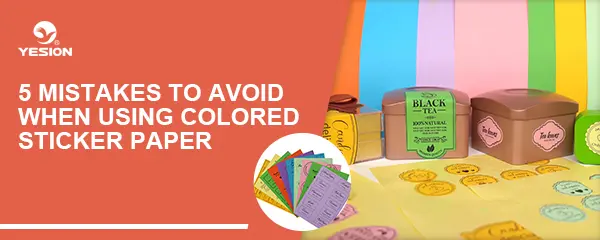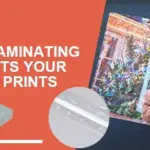
How Cold Laminating Film Protects Your Photos and Prints
2025-07-11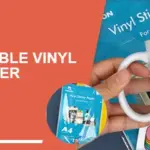
Best Printable Vinyl Sticker Paper for 2025
2025-07-25Colored sticker paper is a versatile tool for crafting, product labeling, journaling, and DIY projects. Its vibrant hues and printable surface make it a favorite among artists, teachers, small business owners, and crafters alike. However, getting professional results with colored sticker paper requires more than just printing and peeling. Avoiding common mistakes can save you time, materials, and frustration. In this guide, we highlight the top 5 mistakes to avoid when using colored sticker paper and how to correct them for flawless, vibrant designs.
5 mistakes to avoid when using colored sticker paper
1. Using the Wrong Printer or Ink Type
Why It’s a Problem:
Not all printers are compatible with colored sticker paper. Using the wrong printer or ink can lead to smudging, poor color accuracy, or even paper jams.
Avoid This By:
Check compatibility: Make sure your sticker paper is designed for inkjet or laser—using the wrong type will ruin the print.
Use high-quality inks: Lower-end inks can bleed or fade. Opt for pigment-based inks for richer colors and water resistance.
Run a test print on plain paper before using the sticker sheet.
✅ Tip: If you’re using glossy or matte colored sticker paper, select the correct media setting on your printer for optimal results.
2. Skipping Paper Settings and Print Adjustments
Why It’s a Problem:
Failing to adjust your printer settings can cause ink pooling, streaks, or poor registration, especially on thicker colored sticker sheets.
Avoid This By:
Setting the paper type to “Heavy Paper,” “Photo Paper,” or “Labels” depending on your printer model.
Adjusting print quality to “Best” or “High” to get vibrant, clear prints.
Making sure to select the correct color profile or ICC setting for your paper.
✅ Tip: Always let the ink dry completely before handling the sheet or cutting to prevent smudges.
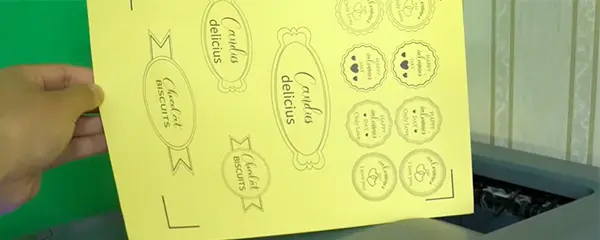
print colored sticker paper
3. Improper Cutting Techniques
Why It‘s a Problem:
Whether you’re using scissors, a craft knife, or a cutting machine like Mecolour or Cricut, cutting errors can ruin your design or waste entire sheets.
Avoid This By:
Ensuring your blade is sharp and clean
Using the correct cutting mat and pressure settings for your material type
Doing a test cut before final cuts
✅ Tip: For intricate designs, use “kiss cut” settings to cut only the top sticker layer while leaving the backing intact.
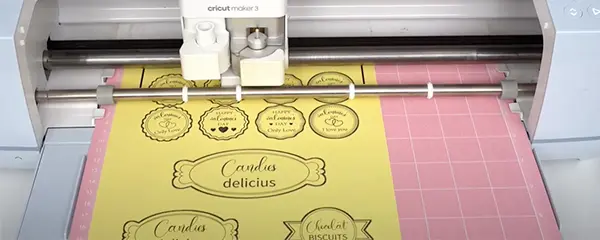
cut colored sticker paper
4. Ignoring Surface Preparation Before Application
Why It‘s a Problem:
Applying stickers to dusty, oily, or wet surfaces can result in poor adhesion, bubbling, or peeling.
Avoid This By:
Cleaning the surface with isopropyl alcohol before application
Making sure the surface is completely dry and smooth
Avoiding application on fabric, textured, or curved surfaces unless the sticker material is rated for it
✅ Tip: Apply stickers using a squeegee or credit card to smooth out air bubbles.
5. Storing Sticker Paper Incorrectly
Why It‘s a Problem:
Colored sticker paper is sensitive to humidity, heat, and dust. Poor storage can lead to curling edges, faded colors, or printer feeding issues.
Avoid This By:
Storing sheets flat in a cool, dry place
Keeping them in their original packaging or a resealable plastic bag
Avoiding exposure to direct sunlight or high humidity
✅ Tip: Store unused sheets away from heat sources and weigh them down with a flat object to keep them from curling.
Colored sticker paper can transform ordinary projects into stunning creations, but only if you use it correctly. By avoiding these five common mistakes—choosing the wrong printer, ignoring print settings, cutting improperly, neglecting surface prep, and poor storage—you can ensure vibrant, long-lasting, professional-looking results every time.
Whether you’re designing custom labels, journaling, or crafting for fun or profit, take the time to treat your materials with care. Your results will speak for themselves.
Related:
Top Craft Ideas Using Colored Sticker Paper
Best Colored Sticker Paper for Crafting & DIY
Colored Sticker Paper vs. Vinyl: Which One Is Best for Your Crafts?

